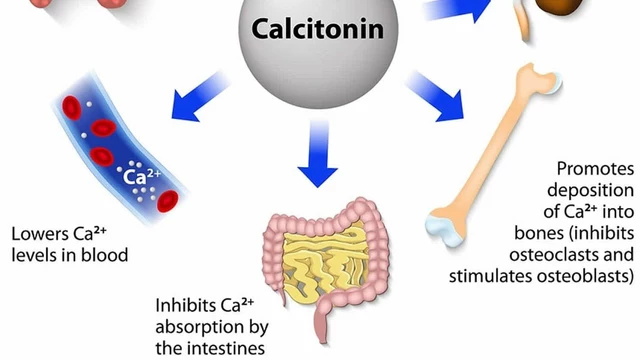The combination of Efavirenz, Emtricitabine, and Tenofovir is quite the powerhouse in the fight against HIV. It packs a punch by targeting different stages of the virus's lifecycle, making it harder for the virus to replicate. But, here's the kicker: drug resistance is a growing issue that could throw a wrench in the works.
So, what does resistance mean here? Basically, over time, the virus can mutate, stopping these drugs from doing their job. For patients, this means their once-effective treatment might not be as potent, leading to a potential rebound of the virus.
The good news? There’s a lot of ongoing research aimed at understanding why this resistance happens and, more importantly, how to tackle it. Successful management often involves switching up the medication before resistance takes a significant hold, or even combining other drugs into the regimen.
- Understanding the Combination
- The Rise of Drug Resistance
- Strategies to Overcome Resistance
- Future Outlook for HIV Treatment
Understanding the Combination
The Efavirenz, Emtricitabine, and Tenofovir combo—often just called Atripla when they're together in one pill—is a staple in HIV treatment. Why? Because each drug plays a unique part in keeping the virus under control. Sounds cool, but let's break it down a bit.
What Each Drug Does
Efavirenz is in a group called non-nucleoside reverse transcriptase inhibitors (NNRTIs). Think of it as a blockade for one of the enzymes HIV needs to multiply. Stop that enzyme, stop the virus.
Emtricitabine and Tenofovir, on the other hand—these are nucleoside reverse transcriptase inhibitors (NRTIs). They act kind of like a decoy, pretending to be the building blocks of DNA that the virus uses to grow. Turns out, fake building blocks don't work, leaving the virus stumped.
Why the Combination Works
These drugs working together create a one-two punch. Efavirenz tackles the virus directly, while Emtricitabine and Tenofovir make replication a nightmare for the virus. Imagine having both your hands tied and being told to build a sandcastle—it ain't happening.
Combination Benefits and Stats
Why choose a combo pill instead of separate ones? Several reasons. For starters, it's one pill a day, making it super easy for patients to stick to their treatment. That's crucial because missing doses is a fast track to letting the virus develop those nasty resistances.
Here's a quick look at how effective this combo is:
| Effectiveness | Statistic |
|---|---|
| Viral Suppression | Over 80% of patients achieve viral suppression within 6 months |
| Adherence | Once-a-day regimen boosts adherence by about 10% compared to multi-pill regimens |
This combination is powerful, but it's not without challenges—like those pesky resistance issues. But understanding how and why each part of this trio works gives a good foundation for tackling any curveballs HIV might throw.
The Rise of Drug Resistance
It's not news that the rise of drug resistance is becoming a real headache in managing HIV. What many folks don't realize is how the clever little virus keeps finding ways to outsmart our treatments. Let's dive into some facts about why this is happening with combinations like Efavirenz, Emtricitabine, and Tenofovir.
Mutation Mechanisms
The core issue stems from how quickly HIV can mutate. Each time it replicates, there's a chance for tiny changes in its genetic makeup. When a person sticks with one type of drug for too long and misses doses, these mutations can lead to resistance. It's akin to the virus learning new tricks to dodge the medication's punch.
Contributing Factors
- Medication adherence: Not taking meds consistently is a huge driver. Skipped doses give the virus little windows of opportunity to bounce back stronger.
- Initial viral load: A higher initial viral load can make treatment less effective over time.
- Prior treatment experiences: Folks switching from other regimens may carry resistant strains already.
Current Statistics
So, how bad is it? A study from 2023 highlighted that nearly 10% of new HIV cases worldwide were resistant to one of the drugs in this combo. That's a wake-up call, prompting researchers to look for better solutions.
| Year | Global Resistance % |
|---|---|
| 2020 | 5% |
| 2023 | 10% |
As healthcare systems ramp up efforts to improve treatment strategies, understanding these dynamics is crucial. Anticipating resistance patterns might help in tweaking treatment courses before resistance settles in seriously.

Strategies to Overcome Resistance
Facing HIV resistance? Don't worry, there are several strategies patients and doctors can use to tackle this thorny issue. Staying ahead of the game involves both proactive monitoring and being ready to tweak treatment plans.
Regular Monitoring and Testing
Keeping tabs on the virus with regular blood tests is crucial. This helps in catching early signs of drug resistance before it becomes a bigger problem. Doctors typically look at viral load and CD4 counts as part of the routine checks.
Switching Up Antiretroviral Therapy (ART)
If resistance starts rearing its ugly head, a common move is to switch up the medication. Often, combinations including other antiretrovirals are considered. By targeting different parts of the HIV life cycle than Efavirenz, Emtricitabine, and Tenofovir, it can provide a fresh solution to suppress the virus.
Genotype Testing for Personalized Treatment
Genotype resistance testing is another trick in the bag. This blood test identifies specific mutations in the HIV strain a person has, guiding doctors to tailor their approach more precisely. It narrows down the meds most likely to keep the virus in check, steering clear of those it might resist.
Adherence to Medication Regimens
Think of adherence as the frontline defense. Sticking closely to the prescribed regimen reduces the chances for the virus to mutate. Missing doses gives HIV a chance to adapt, so keeping on schedule is key.
Table of Mutation Stats
To make it clearer, here's how mutation rates can vary:
| HIV Mutation | Resistance Rate |
|---|---|
| K65R | 10-15% |
| M184V/I | 20-25% |
| Y181C | 5-10% |
These figures highlight how certain mutations can significantly impact drug effectiveness.
In wrapping up, battling resistance takes a well-planned strategy. It's about keeping watch on those viral loads, considering treatment switches wisely, and standing firm with the meds. With the right mix of vigilance and flexibility, patients can keep ahead of resistance and maintain control over their HIV journey.
Future Outlook for HIV Treatment
When we look to the future of HIV treatment, it's hard not to feel hopeful. Advances in medicine continue to push boundaries, and we're seeing exciting developments on the horizon. Imagine a world where drug resistance isn't such a looming threat—a world where new therapies make HIV something we can manage more easily.
Potential New Therapies
Researchers are tirelessly working on new drugs that act differently from current options like Efavirenz, Emtricitabine, and Tenofovir. One promising area is the development of long-acting formulations. These could mean fewer pills and possibly even injections or implants that last for months. Just think about how game-changing this could be for people struggling with daily medication routines.
Gene Editing
Gene editing, specifically using CRISPR technology, is another exciting frontier. Scientists are exploring ways to literally snip out the parts of the virus’s genetic code that allow it to hijack our cells. While we're still in the experimental stages, this could potentially lead to a functional cure.
Vaccines on the Horizon
Even though developing an HIV vaccine has been something like chasing a mirage, there's real progress being made. Some candidates in clinical trials show promise in boosting the immune system to fight the virus more effectively. A successful vaccine could change everything.
Of course, every step forward comes with challenges—ethical, financial, and logistical. But with global cooperation and investment, these hurdles are ones we're likely to overcome. So, here’s to a future where living with HIV is no longer a burden.





Comments (6)